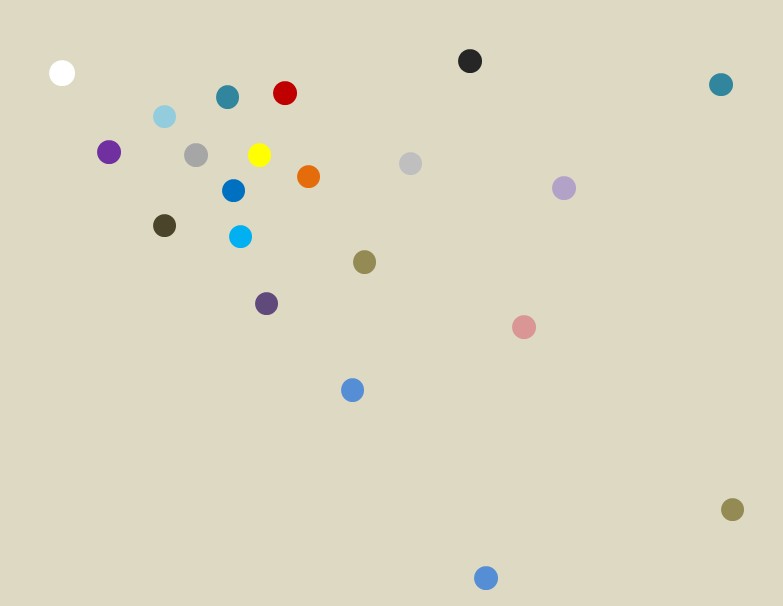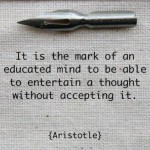In Our Biggest Failure, Mike Lee wrote in this space that all other problems in education:
Pale in comparison to our students’ ultimate inability or unwillingness to think for themselves, to recognize learning and inquiry as enjoyable, identify their own biases and vulnerabilities, and to wake up every day wondering, “What don’t I know?”
Paraphrasing Mike, we pre-load our students’ software with no expectation that they will ever learn on their own how to upgrade their own operating system.
Recently, nearly everything I read, do, or think seems like an appendix to Mike’s piece.
In How to Create a Mind, Ray Kurzweil opens a chapter with a quote in which Gottfried Willhelm Leibniz imagines a thinking, feeling, and perceiving machine enlarged to a size that you could walk in and look around. Leibniz wrote that you would see, “Nothing but parts which push and move each other, and never anything that could explain perception.”
Learning and recognition, according to Kurzweil, involve recognizing patterns and high understanding involves making connections between old patterns and new contexts.
I just attended a Google Education event. Both days began with a speaker inspiring us to develop thinking skills in our students. On opening day, Jaime Casap, Google Global Education Evangelist said, “Don’t tell kids what they’re going to learn, ask them what problem their going to solve.”
The next day opened with Google trainer Monica Martinez encouraging us to create classrooms in which students learn to learn on their own. I loved that because as the words were coming out of her mouth, I received an email that Edweek had just then published my article on the dos and don’ts for generating student autonomy.
A slide posed the question, “Do we want to teach kids to find the dots or connect the dots?”
Regrettably, most the sessions I attended were precisely about finding the dots and moving them around quickly but manifestly about not connecting them. One facilitator, whose presentation had “Critical Thinking” in the title challenged participants to find why people say the Queen Mary is haunted. The only thing that mattered to her was how many hits we got and whether we got ads. We didn’t know how to search if we got lots of hits and ads. She really said that.
That was on my mind when I read Victor Davis Hansons’s recent National Review article Technology and Wisdom. He writes about the tendency of technology to insulate us from thinking. That’s why we’re stymied by how a modern jetliner could disappear. He reminds us of immensity of the oceans, the dark of night and the relative tininess of a 250 ton jet – as well as the existence of those who use technology to thwart technology.
Hanson suggests that teaching Latin would be a more cost effective means of helping students to master thinking than handing out free IPads. After all, “Speeding up their ignorance is not the same as imparting wisdom.” Furthermore, “Smart machines are simply the pumps that deliver the water of knowledge — not knowledge itself.”
Have you read the hysterical story called “They’re Made out of Meat” by Terry Bisson? A lead Extraterrestrial is questioning another who just returned from a reconnaissance to Earth. Please give it a look. Here’s an excerpt:
“Meat. They’re made out of meat.”
“Meat?”
“There’s no doubt about it. We picked up several from different parts of the planet, took them aboard our recon vessels, and probed them all the way through. They’re completely meat.”
“That’s impossible. What about the radio signals? The messages to the stars?”
“They use the radio waves to talk, but the signals don’t come from them. The signals come from machines.”
“So who made the machines? That’s who we want to contact.”
“They made the machines. That’s what I’m trying to tell you. Meat made the machines.”
And now I just remembered the line in When I Was A Dinosaur by Trout Fishing in America: “When I was a dinosaur I had a little bitty brain. I never thought of anything I didn’t know before.”
What angers me is the intential use of language to derail thinking in political debate. Kevin D.Williamson’s recent National Review article, Antithought, explores this. He writes that:
Understanding politics and policy is work, because thought is work. Antithought, on the other hand, is easy, which is why such content-free phrases…and the like pass for insight, even wit.
So thinking about thinking and thinking about not thinking and thinking about what thinking is is on a lot of minds these days.
Pretty impressive for blobs of meat bumping parts to together in ways that no way explains thought itself.
But unless we keep at it and find a way to keep our students at it, we will suffer the fate of René Descartes.
He walked into a restaurant. The waiter asked if he’d like an appetizer. “I think not,” said Descartes. And disappeared.










Comments 2
Sandy – you cover so much ground in this post. I agree with you that the use of buzz words such as “critical thinking” have yet to be realized in the minds of our students. Could it be that as teachers we are missing the most important goal of all – relationships with students? I often worry that I spend a significant amount of time on lesson planning, engagement, etc. that I forget a simple question: How is my teaching building a relationship with students?
Maybe it is time to step back from so many of the methods or tools that people want us to use and just think about the time we are spending building relationships with students. Isn’t that what they remember most?
You know,Greg, I see more critical thinking – and better retention when we go off on tangents then when we stick to the plan – even if I tried to build critical thinking into the plan.
And those tangents are when a lot of relations get built up.
Thanks!